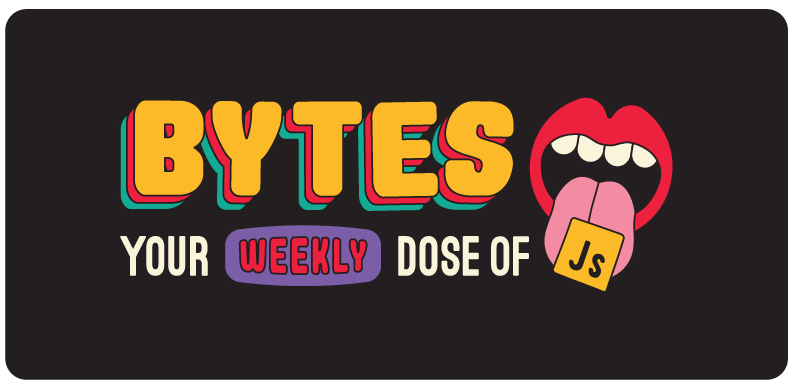Finding love on the web

Today’s issue: The React team twists the knife, Tai Lopez teaches us how to secure our web apps, and a JavaScript library protects the toxic forest.
Welcome to #367.

The Main Thing

Just call me the platform, because I want you to use me
Finding love on the web
No matter what your relationship status is on this fateful day, none of us are truly alone – because the Interop project just released their 2025 report, beckoning all of us to join their cross-browser polycule movement.
How we got here: Interop was first organized back in 2021 by Google, Apple, Microsoft, and Firefox to improve browser interoperability. Each year, they pick a set of “focus areas,” create web-platform tests for each one, then publicly track which browser teams pass or fail.
And as anyone who did Cub Scouts can tell you, this threat of public shaming is a powerful motivator. Interop has been hugely successful, and the browsers are more aligned than ever.
They’ve got 19 focus areas for 2025 – but here’s a quick rundown on the four most exciting ones:
-
Anchor positioning – Lets you anchor a positioned element to a specific anchor point, making it easier to build popovers and tooltips without extra libraries or
divsoup. -
Navigation API – A centralized API for handling page navigation that gives SPAs and MPAs a more robust, built-in way to manage transitions.
-
URLPattern– Simplifies request handling and client-side routing by providing a standardized way to define and match URL patterns. -
Same-document view transitions – Enables seamless animations between UI states without full page reloads, making SPAs feel smoother and more native-like.
Bottom Line: It’s rare to see a cross-company initiative involving multiple tech giants actually produce meaningful results – but that’s exactly what Interop is doing. Love to see it.

Our Friends
(With Benefits)

When Convex open sources everything and lets you self-host
Convex is now self-hostable 👀
Web developers already love Convex for its open-source reactive database and backend that lets you write all your logic in pure TypeScript.
And earlier today, they just announced that you can now self-host Convex too.
Yes, that means you can run Convex on your own hardware – but more importantly, it’s part of their bigger push toward open source and local dev:
-
Open-source everything – They open-sourced the Convex dashboard, added support for storing data in Postgres and MySQL, and packaged it all up in a Docker container you can run anywhere. Join the Convex Discord to see what people are building.
-
Better local dev – You can now fire up a local instance instantly with
npx convex dev, allowing you to easily build on Convex while offline. -
Funding OSS – Convex joined the Open Source Pledge to commit meaningful funding to open source projects.
Check out the repo and try it out for yourself.

Cool Bits
-
The React team just announced that they’re sunsetting Create React App and they still have an extreme allergy to things that rhyme with feet.
-
Ohm is a JavaScript library for building parsers, interpreters, compilers, and giant trilobites that protect the toxic forest and occasionally murder humans in Nausicaä of the Valley of the Wind.
-
Sentry just launched Uptime Monitoring to alert you whenever something on your site goes down and give you all the context you need to fix it immediately. That way, you can always catch an outage before your users (and bosses) do. [sponsored]
-
Brutecat wrote a fun article called Leaking the email of any YouTube user for $10,000 – and for just $99, they’ll throw in a Tai Lopez course on how you can do it too.
-
Tiger Abrodi wrote about How React Router works under the hood as a framework.
-
CodeRabbit created an AI-powered code reviewer that delivers context-aware feedback on your PRs. It catches issues that humans usually miss and it learns how to improve its suggestions over time – unlike my manager. [sponsored]
-
FullSoak is a no-build, full-stack TypeScript framework that may or may not be banned in Utah.
-
Ben Shumaker wrote about designing backgrounds with LLMs and React.
-
The App Center is shutting down on March 31st, which sucks pretty bad if you’re a React Native developer. Luckily, Codemagic created a viable alternative that offers a CodePush server for shipping OTA updates and CI/CD builds that are up to 8.5x faster than App Center 🔥. [sponsored]
-
Shane Friedman wrote about why he rebuilt ProseMirror’s renderer in React. Unlike me, his “why” doesn’t seem to come from a deep-seated need to prove his 3rd-grade PE teacher wrong.
-
Prettier 3.5 comes with a new
objectWrapoption and TS config file support. -
Alex Suraci wrote about why and how his team replaced their React frontend with Go and WebAssembly. Spoiler alert: It started out with a kiss, how did it end up like this? (It was only a kiss) It was only a kiss.